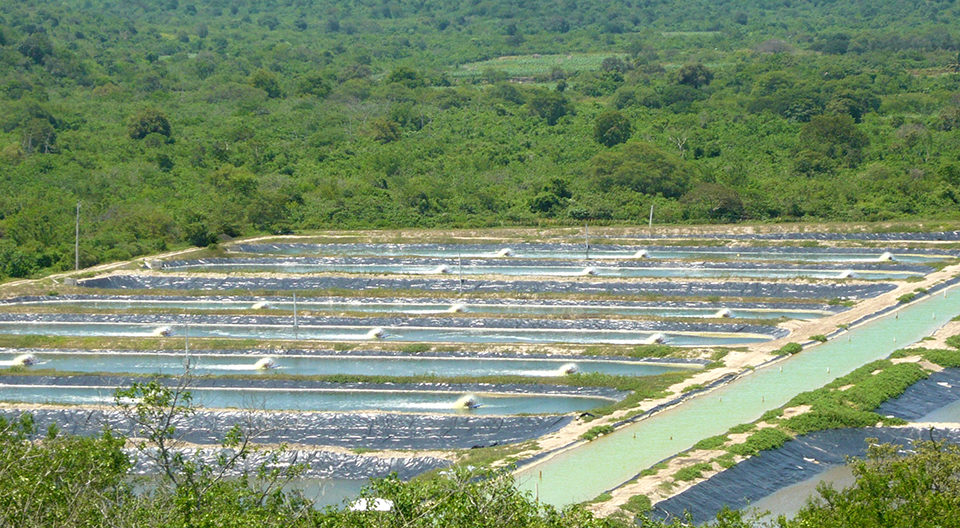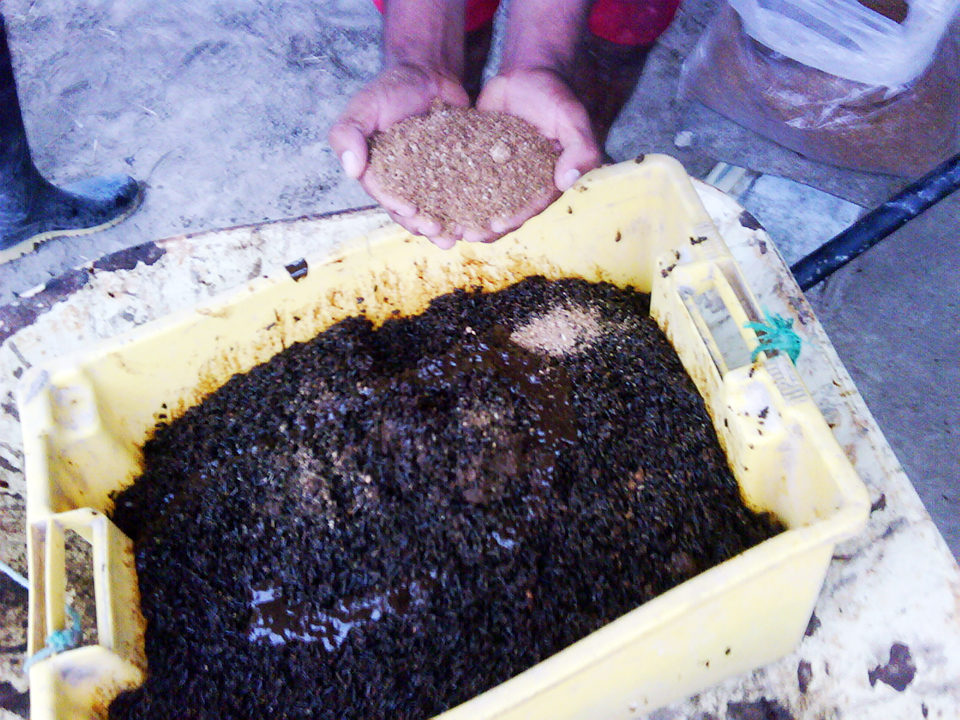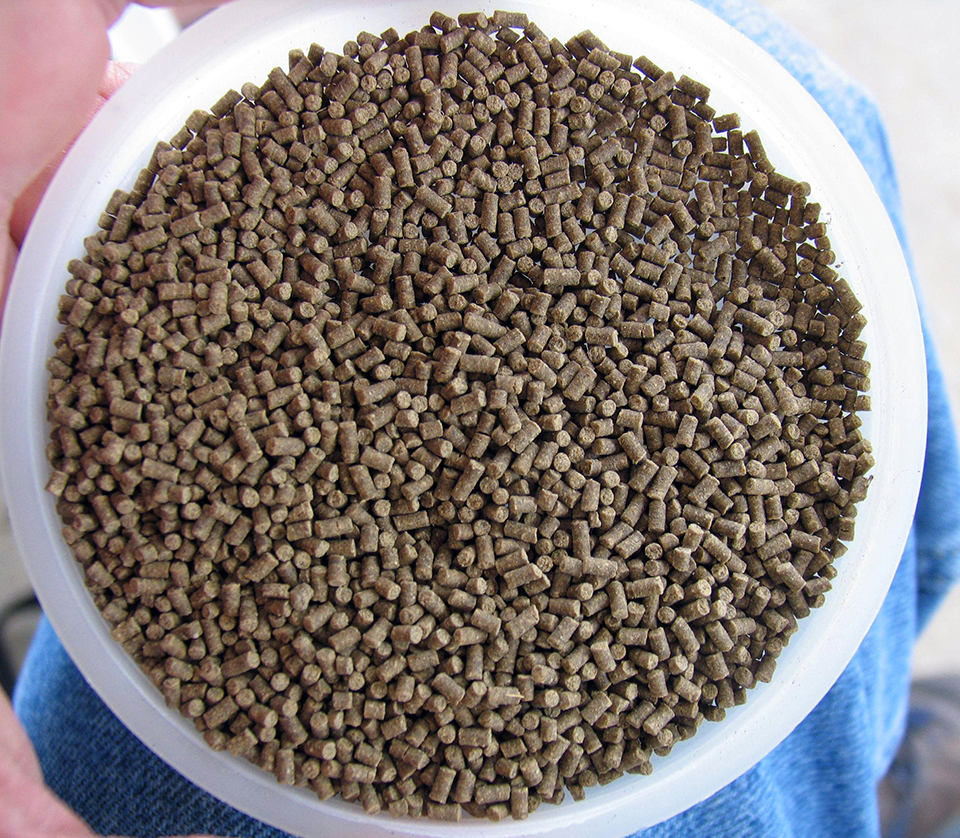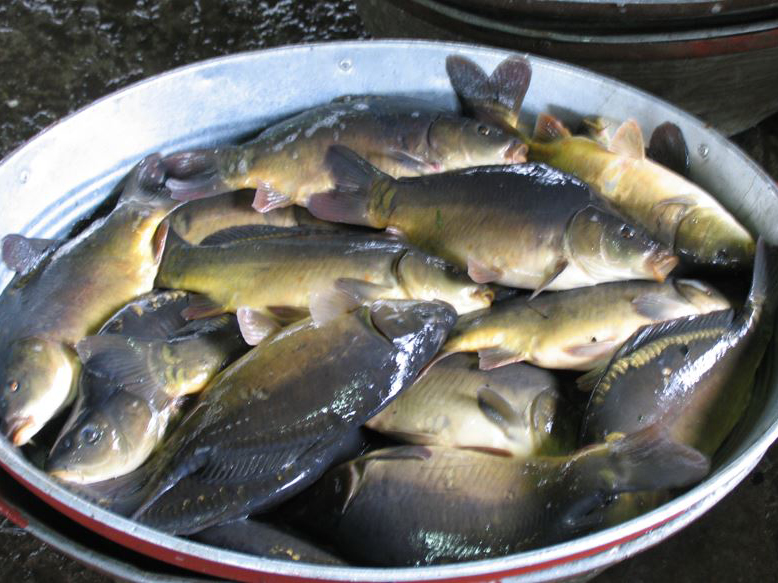Process leads to cleaner ponds and healthier shrimp

PescaMaris S.A. is reviving the lost industry of intensive shrimp farming in Ecuador. Several years ago, white spot syndrome decimated the entire industry, but now PescaMaris has started its second year of production. Located just outside Montecristi in the Manabi province of Ecuador, the 7-hectare (ha) intensive site can equal the production of 150 ha of traditional open water ponds.
“In intensive shrimp farming, the most critical requirement is to maintain the quality of the water, which in turn maintains the health of the population,” said Ernesto Cardenas, the general manager of the operation. “We have found some unique combinations that allow us to improve our feed conversion, decrease the cost of our feed and ultimately increase our total output per hectare.”
One key aspect PescaMaris credits for the improvement in its operation is the strategic use of fish peptide/nucleotide isolates in several steps during production. Cardenas, who previously worked on feed formulation at the AgriPac Balanfarina feed company in Ecuador, has found multiple ways to catalyze the growth of the shrimp with peptide feed treatments. His efforts are supported by Representaciones Acuicolas, a local distributor that tests shrimp and tilapia feed programs and performs analytical work utilizing peptides for bacteria fermentation.
Managing water quality
Inoculating ponds with good bacteria is a standard practice in high-quality shrimp operations, and it is even more critical for intensive farms. PescaMaris has enhanced this process by adding Bluewave PerfectDigest fish peptide isolates during the bacterial “fermentation” process at the farm. The peptide/nucleotide base is produced at the Marine Protein S.A. factory in Manta, Ecuador.
During the first 10 days of fermentation, sugar molasses at a ratio of 20 L/L bacteria is traditionally mixed with 1,000 L of water to create a full batch to be added to the ponds. With this standard recipe, the molasses is the only food source for the bacteria in the holding tank.
In a new approach, PescaMaris includes 1 L of fish peptide isolates with 10 L of molasses, which exponentially accelerates the growth of the bacteria. The increased population inside the fermentation tank results in more bacteria reaching the water with each application and, ultimately, cleaner ponds with healthier shrimp.
Lower-cost feed
Feed is the highest-cost component for commercial production, and PescaMaris found a way to reduce feed costs using peptides. This process begins by replacing 20 percent of the manufactured feed, which costs about $31 for a 40-kg bag, with a blend of traditional fermented grain silage priced at only $8 for 40 kg. In order to bring the grain silage to shrimp feed quality, it must be “top dressed” with a combination of fish peptides, nucleo-tides and fish fats/oils. At $4 per application, the PerfectDigest FPc product brings the overall cost to about $12 for 40 kg of the secondary feed.
The mix is allowed to set for about an hour prior to feeding, which allows the peptides to saturate the silage. The solubility of the peptide product allows partial release when the feed hits the water. It serves as an attractant for the shrimp and ensures they consume all of the low-cost silage material.
Top dressing grain silage with fish peptide has direct implications when considering the use of other “waste” grain products, such as distiller dried grains, in aquaculture feeds. With massive amounts of low-cost distiller grains available and a newly designed program to treat them with fish peptides, shrimp farmers around the world could benefit from lower feed costs.
They can also improve feed conversion by using a few techniques. For example, gently placing feeds into trays or nets and lowering them into ponds, rather than just throwing pellets, helps more of the feed reach the shrimp and not be lost in the water.

Farm treatments
Adding fish peptides to feed at the farm has some major advantages. For one, farmers can be sure of exactly how much peptide is being included in their feed programs. Feed mill recipes change – and with the recent high fishmeal prices and sometimes short supply, there has been pressure to reduce its inclusion, resulting in lower-performing feeds.
At-farm top dressing with liquid peptide products also assures that the peptides have not been denatured during steam extrusion processes at the feed mill. This means the peptides have maximum bioactivity when they reach the water.
In nature, shrimp eat raw marine components in their natural diets. Adding peptides provides bioactive peptides and nucleotides in an uncooked condition – similar to the way they occur in nature. This allows a lower net inclusion rate of fish-based ingredients without affecting final performance.
Some farmers are concerned that when the peptides leach from the feed, they are lost in the ponds. However, what they fail to realize is that the bacteria population in the water quickly consumes the peptides and forms a floc, which in turn is fed upon by the shrimp.
Sustainable production
Having a small environmental footprint, water recycling and the use of byproduct feed ingredients to reduce fishmeal use are the cornerstones of the program at PescaMaris.
As was previously stated, the farm currently operates on only 7 ha and produces about 13.5 metric tons (MT) shrimp/ha. This compares to the 650 kg/ha achieved at less-intensive farms.
The facility has only limited quantities of high-salinity groundwater, so PescaMaris recycles water through a large post-pond holding area. When the ponds are drained, the water has several weeks to recover in the holding area, from which it can later be reused in subsequent ponds.
During production cycles, the farm operates with zero water exchange. Instead, it maintains oxygen levels above 5 ppm by relying on the bacteria and continuous paddlewheel aeration to keep the water clean.
Utilization of the liquid fish peptides on site in conjunction with the fermented grain lowers the total fishmeal content of the fed diets by about 20 percent, a reduction that can help reduce the impacts of the 5 million MT of fishmeal used in aquaculture each year. And since the products PescaMaris has chosen all come from byproduct sources, this further reduces the impacts on wild-catch fishmeal.
Economic success
Farming is a business, and economic success is the final measure of the program. At PescaMaris, the latest production cycle has shown a great improvement over the last. The overall feed-conversion ratio has improved from 1.7 in 2009 to the current 1.3.
Currently, the ponds that utilize the peptide program are two weeks ahead of the neighboring control pond. Table 1 shows a summary of shrimp performance from this cycle. Good market conditions prompted an early harvest at day 85 instead of waiting until day 100. Although intensive farming is historically 30 percent higher in unit cost of production than extensive farming, PescaMaris is nearing a unit cost similar to those achieved at extensive facilities.
Rottman, Recent shrimp performance, Table 1
| Survival | 85% |
| Feed-conversion ratio | 1.25 |
| Harvest shrimp size | 10 g |
| Yield/ha | 8.2 mt |
| Days of cycle | 84 |
(Editor’s Note: This article was originally published in the July/August 2011 print edition of the Global Aquaculture Advocate.)
Author
-
Mark Rottman
Bluewave
Ave. La Encalada 1388
Office #1101
Lima 33 Peru
Tagged With
Related Posts

Health & Welfare
A case for better shrimp nutrition
Shrimp farm performance can often be below realistic production standards. Use proven nutrition, feeds and feeding techniques to improve profitability.

Health & Welfare
A comprehensive look at the Proficiency Test for farmed shrimp
The University of Arizona Aquaculture Pathology Laboratory has carried out the Proficiency Test (PT) since 2005, with 300-plus diagnostic laboratories participating while improving their capabilities in the diagnosis of several shrimp pathogens.

Aquafeeds
A look at protease enzymes in crustacean nutrition
Food digestion involves digestive enzymes to break down polymeric macromolecules and facilitate nutrient absorption. Enzyme supplementation in aquafeeds is a major alternative to improve feed quality and nutrient digestibility, gut health, compensate digestive enzymes when needed, and may also improve immune responses.

Health & Welfare
Barcoding, nucleic acid sequencing are powerful resources for aquaculture
DNA barcoding and nucleic acid sequencing technologies are important tools to build and maintain an identification library of aquacultured and other aquatic species that is accessible online for the scientific, commercial and regulatory communities.


